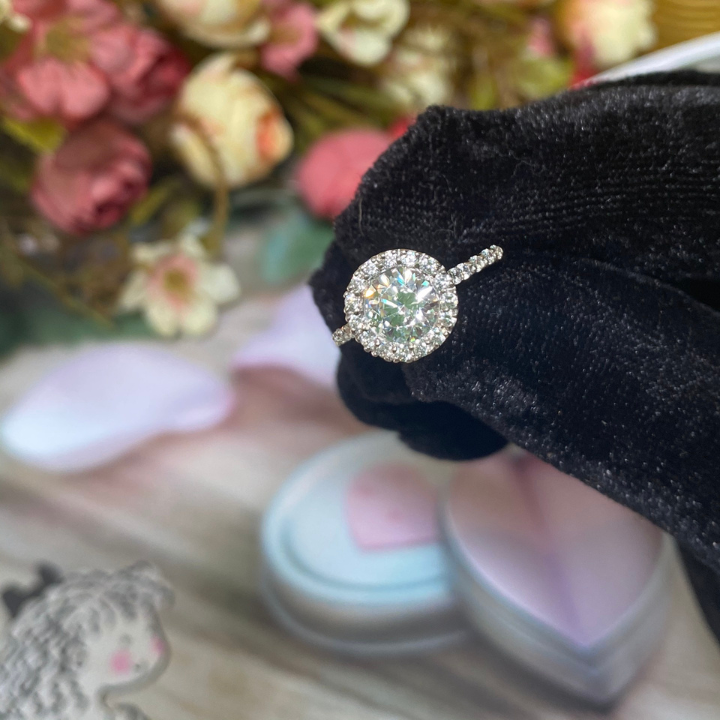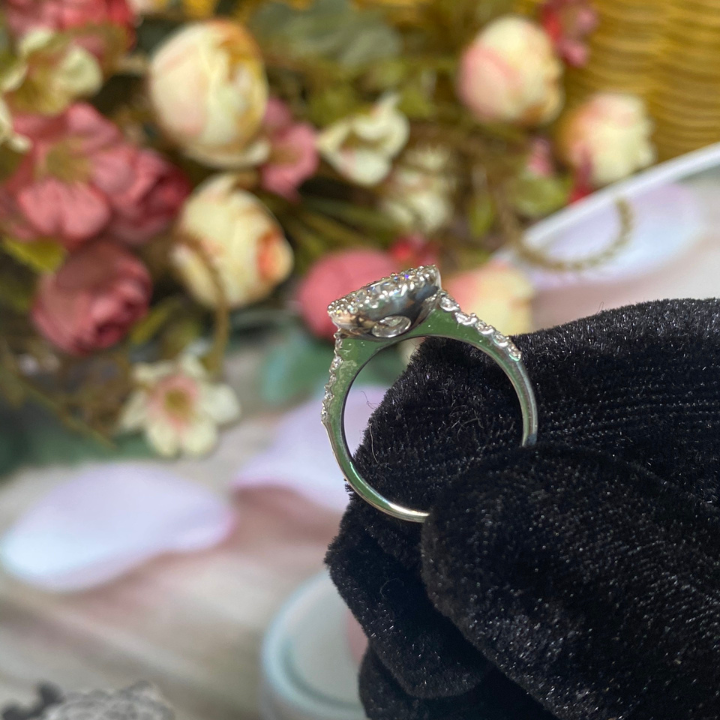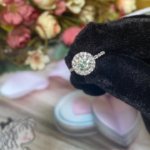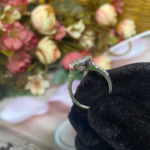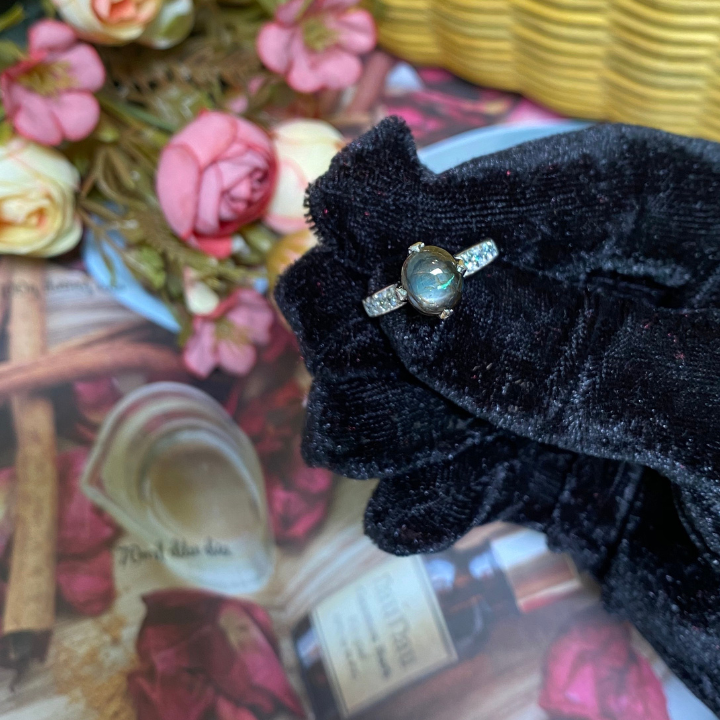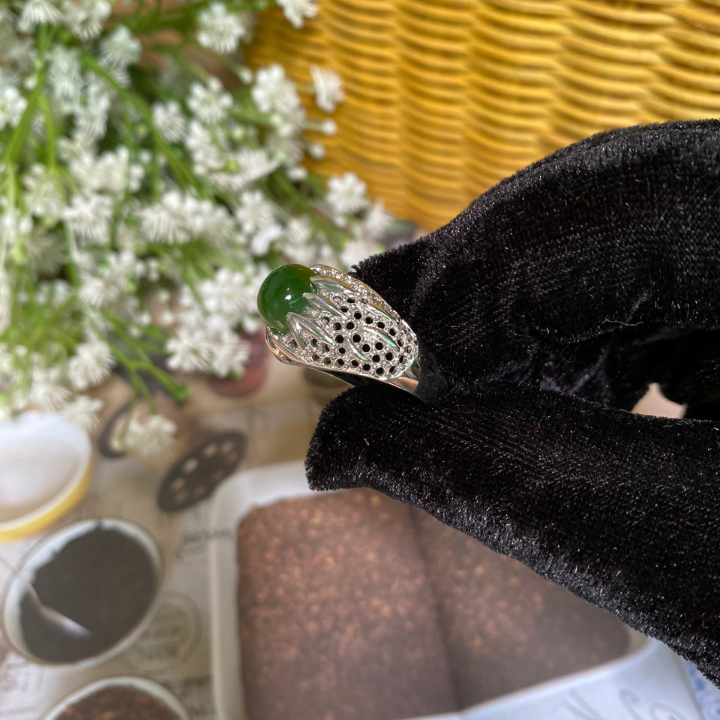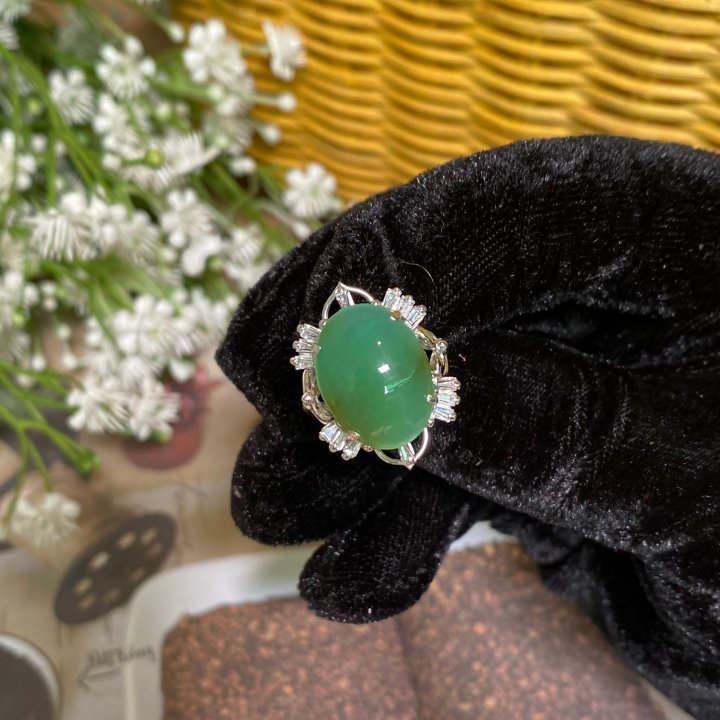Cubic Zirconia Ring NB KT 05
SKU: NB KT 05
$700
Describe
Cubic zirconia (CZ) is the cubic crystalline form of zirconium dioxide (ZrO2). The synthesized material is hard and usually colorless, but may be made in a variety of different colors. It should not be confused with zircon, which is a zirconium silicate (ZrSiO4). It is sometimes erroneously called cubic zirconium.
Because of its low cost, durability, and close visual likeness to diamond, synthetic cubic zirconia has remained the most gemologically and economically important competitor for diamonds since commercial production began in 1976. Its main competitor as a synthetic gemstone is a more recently cultivated material, synthetic moissanite.
There are a few key features of cubic zirconia which distinguish it from diamond:
- Hardness: cubic zirconia has a rating of approximately 8 on Mohs hardness scale vs. a rating of 10 for diamond.[1] This causes sharp edges in cut crystals to dull and round off in CZ, while with diamond the edges remain sharp. Furthermore, when polished, diamond will rarely show polish marks and those seen will travel in different directions on adjoining facets while CZ will show polishing marks along the same direction of the polish.[10]
- Specific gravity (relative density): the density of cubic zirconia is about 1.7 times that of diamond. This difference allows skilled gem identifiers to tell the difference between the two by weight. This property can also be exploited by dropping the stones in heavy liquids and comparing their relative sink times (diamond will sink more slowly than CZ).[10]
- Refractive index: cubic zirconia has a refractive index of 2.15–2.18, compared to a diamond’s 2.42. This has led to the development of immersion techniques for identification. In these methods, stones with refractive indices higher than that of the liquid used will have dark borders around the girdle and light facet edges while those with indices lower than the liquid will have light borders around the girdle and dark facet junctions.[10]
- Dispersion is very high at 0.058–0.066, exceeding a diamond’s 0.044.
- Cut: cubic zirconia gemstones may be cut differently from diamonds. The facet edges can be rounded or “smooth”.
- Color: only the rarest of diamonds are truly colorless, most having a tinge of yellow or brown to some extent. A cubic zirconia is often entirely colorless: equivalent to a perfect “D” on diamond’s color grading scale. Other desirable colors of cubic zirconia can be produced including near colorless, yellow, pink, purple, green, and even multicolored.
- Thermal conductivity: Cubic zirconia is a thermal insulator whereas diamond is the most powerful thermal conductor. This provides the basis for Wenckus’ identification method (currently the most successful identification method)[9]


